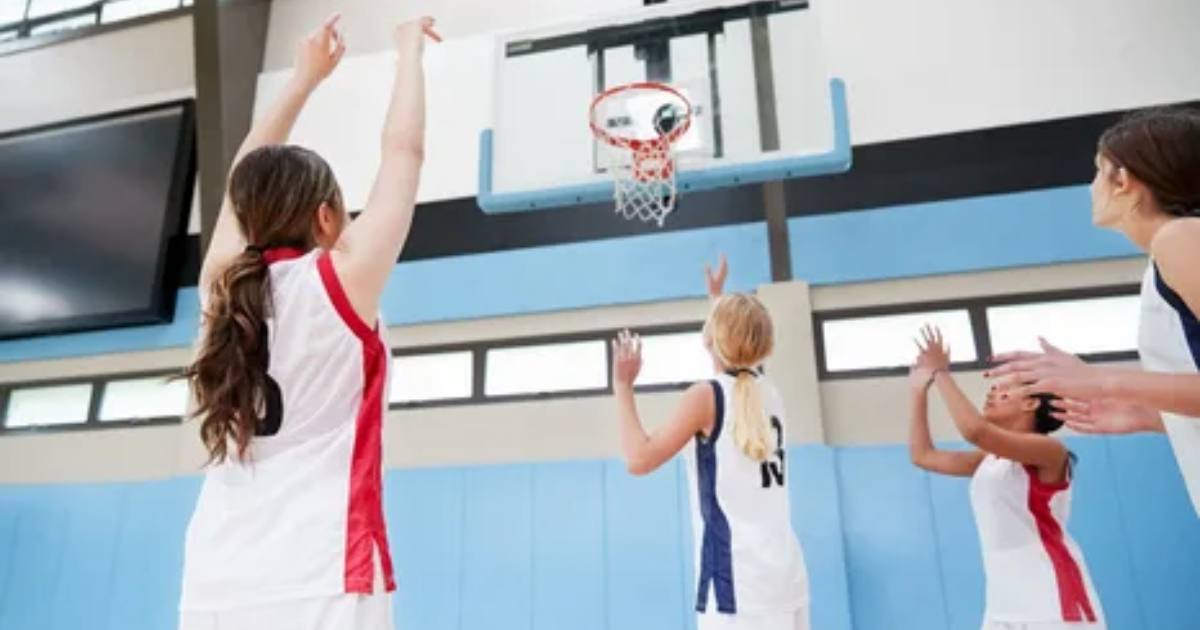Discovering the exact height of a high school basketball goal is crucial for players and enthusiasts alike. Understanding the standard dimensions adds depth to the game, influencing strategies and player development.
Ever wondered, How tall is a high school basketball goal? Imagine shooting hoops on the school court. The goal stands tall, challenging you to make those perfect shots. Discover the exact height, so next time you step on the court, you know just how high you need to aim. Get ready to conquer the game and impress your friends with your basketball knowledge!
High school basketball goals stand at a regulation height of 10 feet, a dimension upheld for decades. This standard ensures consistency across games, fostering fair competition and shaping the skills of aspiring players nationwide.
Regulation Heights in High School Basketball
In high school basketball, the regulation height of the basketball goal is 10 feet. This standard has been in place for a long time, ensuring fairness and consistency in the game. When you step onto a high school basketball court, you can expect the hoop to be set at this height, creating a level playing field for all teams.
This 10-foot regulation is not just a random number; it plays a crucial role in shaping the skills of young players. Shooting, dunking, and blocking shots at this height require a combination of precision, strength, and agility. It becomes a benchmark for aspiring athletes, pushing them to develop their abilities within the established norms of the sport.
Impact of 10-Foot Goals on Player Development

The 10-foot height of high school basketball goals has a significant impact on player development. This standard challenges players to reach new heights in their skills and athleticism. Shooting at this elevation requires precision and strength, honing a player’s shooting technique and overall coordination.
Moreover, the 10-foot goal serves as a universal benchmark, ensuring consistency across games. Players learn to adapt to this standard from an early age, fostering a sense of fair competition. The height encourages strategic plays, emphasizing teamwork and individual growth.
Evolution of High School Basketball Goal Standards
Over time, high school basketball goal standards have undergone changes, but the 10-foot height remains a constant. Initially established to challenge and enhance players’ skills, this regulation has become a fundamental aspect of the game. From dusty schoolyards to modern courts, the evolution of these standards reflects a commitment to fair play and consistent competition.
While the basic height hasn’t changed, advancements in materials and technology ensure durability and safety. The evolution of high school basketball goal standards mirrors the sport’s growth, emphasizing the timeless significance of shooting hoops at the iconic 10-foot height.
Strategic Significance of 10-Foot Height in Games

The 10-foot height of high school basketball goals is crucial for strategic gameplay. This standardized height challenges players, requiring precision in shooting and defensive skills. It ensures a fair playing field, as all teams face the same goal height, promoting equal opportunities for success.
Teams must devise tactics that account for this height, influencing shot selection and defensive strategies. This consistency in goal height across high school basketball games not only defines the sport’s nature but also cultivates a level playing field for players to showcase their talents and enhance their skills.
Ensuring Fair Play: The 10-Foot High School Standard
The high school basketball goal has a standard height of 10 feet. This measurement is the same across most high school basketball courts, ensuring a consistent playing experience for teams everywhere. The 10-foot height has become a fundamental part of the game, challenging players and shaping their skills. When it comes to younger players, such as 6-year-olds, considering What Height Basketball Goal For 6 Year Old? is essential.
This standardized height is not just a random number. It’s a carefully chosen dimension that has been maintained over the years to promote fairness and uniformity in high school basketball. Whether you’re shooting hoops in a small-town gym or a big-city arena, the 10-foot standard remains a constant, creating a level playing field for high school athletes nationwide.
Height Challenges in High School Basketball

High school basketball players often face height challenges that impact their game. While taller individuals may have advantages in rebounds and shot-blocking, shorter players rely on speed and agility. The height of the basketball goal, typically set at 10 feet, poses a challenge for players of all sizes. It demands precise shooting and strategic positioning, leveling the playing field and emphasizing skill development over physical attributes.
Overcoming height challenges requires a combination of techniques. Shorter players often excel in dribbling and quick maneuvers, utilizing their lower center of gravity to navigate the court effectively. Coaches emphasize skill enhancement, fostering a diverse and adaptable team.
Historical Perspective on Goal Dimensions
In the early days of high school basketball, goal dimensions varied widely. Teams played on makeshift courts with goals often attached to walls or gymnasium rafters. It wasn’t until the mid-20th century that a standardized height of 10 feet was established for high school basketball goals, bringing uniformity to the game.
This standardization, proposed by basketball innovators, aimed to create a level playing field and promote fair competition. Over the years, the 10-foot high school basketball goal became a symbol of the sport’s integrity, influencing the training and strategies of players nationwide. Today, this historical perspective reminds us of the evolution that has shaped high school basketball into the dynamic and standardized game we know.
Training for Success: Adapting to 10-Foot Goals
| Skill Area | Training Approach |
| Shooting Techniques | Practice shooting from various distances at 10 feet. |
| Vertical Jump Training | Enhance vertical jump to reach the goal comfortably. |
| Endurance Conditioning | Build stamina for consistent performance throughout the game. |
| Defensive Strategies | Develop defensive skills against high shots. |
| Team Coordination | Collaborate with teammates to strategize goal attempts. |
When players first start, reaching the hoop might seem tough, but practicing regularly helps build the strength and skill needed. As they grow, the 10-foot height becomes a familiar challenge, shaping their shooting techniques and enhancing overall performance.
Coaches play a vital role in guiding players through this adaptation. They design drills and exercises that gradually build the necessary abilities. The 10-foot goal acts as a constant in training, pushing players to improve their vertical leap, accuracy, and confidence.
Influence of Goal Height on High School Basketball Culture

The height of high school basketball goals plays a big role in shaping the culture of the game. At 10 feet tall, these goals create a challenging and competitive environment for players. This height standard has become a symbol of achievement and skill in high school basketball, influencing how players train and approach the game.
The 10-foot goal has also fostered a sense of consistency and fairness across different high school basketball courts. Whether in urban or rural areas, players know they’ll face the same height challenge. This shared standard has become a unifying factor in high school basketball culture, creating a level playing field for all participants and contributing to the sport’s enduring popularity.
Maintaining Consistency: The 10-Foot Benchmark
The 10-foot benchmark is a key rule in high school basketball. All basketball goals in high school games must be set at this height. This standard ensures that games are fair and equal for all teams. Every player has the same challenge when shooting for the hoop.
The 10-foot height has been a consistent rule for many years. It helps shape the skills of players and adds a level playing field. Players practice and train to master the 10-foot goal, making it a fundamental aspect of high school basketball.
FAQs
What is the standard height of a high school basketball goal?
The standard height for a high school basketball goal is 10 feet.
Why is the height of the basketball goal in high school set at 10 feet?
The 10-foot height is a longstanding rule to ensure fairness and consistency in the game.
Can the height of the basketball goal in high school vary?
No, all high school basketball goals must adhere to the standard height of 10 feet.
Does the 10-foot height apply to both boys and girls’ high school basketball?
Yes, the 10-foot height is the same for both boys and girls high school basketball.
Has the height of high school basketball goals always been 10 feet?
Yes, the 10-foot height has been a consistent standard in high school basketball for many
Conclusion
understanding the height of a high school basketball goal, set at a standard of 10 feet, is essential for players, coaches, and enthusiasts. This regulation not only ensures fair competition but also plays a pivotal role in shaping players’ skills and strategies.
The 10-foot benchmark stands as a consistent pillar in the sport, fostering a level playing field and contributing to the rich culture and development of high school basketball. As players continue to train and adapt to this height, it remains a fundamental aspect of the game that transcends generations, maintaining the integrity and excitement of high school basketball across the board.



